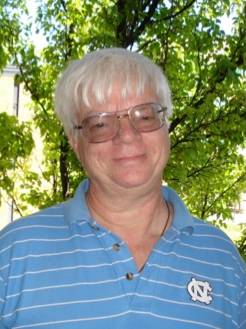JR Dennison
Physics
Professor

Contact Information
Office Location: SER 222DPhone: 435-797-2936
Email: jr.dennison@usu.edu
Additional Information:
Educational Background
Ph.D. in Physics. 1985; Virginia Tech, Blacksburg, VA
M.S. in Physics. 1983; Virginia Tech, Blacksburg, VA
B.S. in Physics, 1979; Appalachian State University, Boone, NC
Expertise
The USU Materials Physics Group (MPG) has more than 30 years experience studying applications electronic and electron transport materials properties and how exposure to extreme environments affects these properties. MPG measures of electron-, ion- and photon-induced electron emission; electron-, ion- and UV/VUV radiation-induced changes of bulk conductivity and radiation induced conductivity; permittivity, electrostatic field strength, and radiation-induced arcing; and optical transmission, emissivity, and cathodoluminescence. They have developed and used numerous electron, ion, and IR/Vis/UV/VUV radiation sources, sensors, and shielding including those used in their electron emission, conductivity, electrostatic breakdown, pulsed electroacoustic, radiation induced conductivity, x-ray irradiation, and Space Survivability Test (SST) test chambers. Their work also includes more than a decade’s studies on the effects of radiation on materials and spacecraft components such as PC board materials, cabling, insulative coatings, shielding, electronic components, memory circuits, control computer, electronic and optical sensors, and optical components.
Dennison and the MPG have more than four decades experience studying more basic aspects of solid state and materials physics, particularly for highly disordered materials. Topics include atomic, vibrational and electronic structure and optical and thermal properties of carbon-based materials using electron, ion, neutron, x-ray and gamma ray scattering and diffraction; IR and Raman scattering; microscopy and diffraction; and electron transport and optical methods; and electron emission and energy loss techniques,. Much of the work has focused on studies of disordered graphitic carbon materials including highly disordered graphite amorphous carbon fullerenes, carbon nanotubes, graphene, and carbon composite materials.
Biography
JR Dennison is a Professor of physics at Utah State University, where he leads the Materials Physics Group. He has worked in the area of electron scattering for his entire career and has focused on the electron emission and conductivity of materials related to spacecraft charging for the last two decades. This has often emphasized studies of the electronic structure of highly disordered materials, with an emphasis on elemental carbon allotropes.
Dennison has a strong interest in physics education with particular emphasis on secondary school interactions; activities in education outreach have included more than a half dozen teacher workshops and the development and coordination of USU Physics Day at Lagoon, an amusement park physics activity serving more than 150,000 secondary student and teachers since 1989.
Employment
Professor, 2000 to present. Physics Department, Utah State University; Logan, UT.
National Academies Senior Research Fellow, 2012. Sabbatical research leave, Spacecraft
Charging and Instrumentation Calibration Laboratory, Air Force Research.
Associate Professor, 1994 to 2000. Physics Department, Utah State University; Logan, UT.
Assistant Professor. 1988 to 1994. Physics Department, Utah State University; Logan, UT.
Research Associate, 1985 to 1988. Dept. Physics & Astronomy, Univ. Missouri; Columbia, MO.
Selected Honors
NASA Group Achievement Award, NASA Space Environment and Effects Branch (2003).
USU Researcher of the Year, College of Science (2015, 2012), Physics Depart. (2007,2006).
USU Graduate Research Mentor of the Year, College of Science (2021), Physics Depart. (2019, 2018, 2004, 2003).
USU Undergraduate Research Mentor of the Year, College of Science (2009)
USU Teacher of the Year, College of Science (1999).
Alumni Professorship Award (1999).

